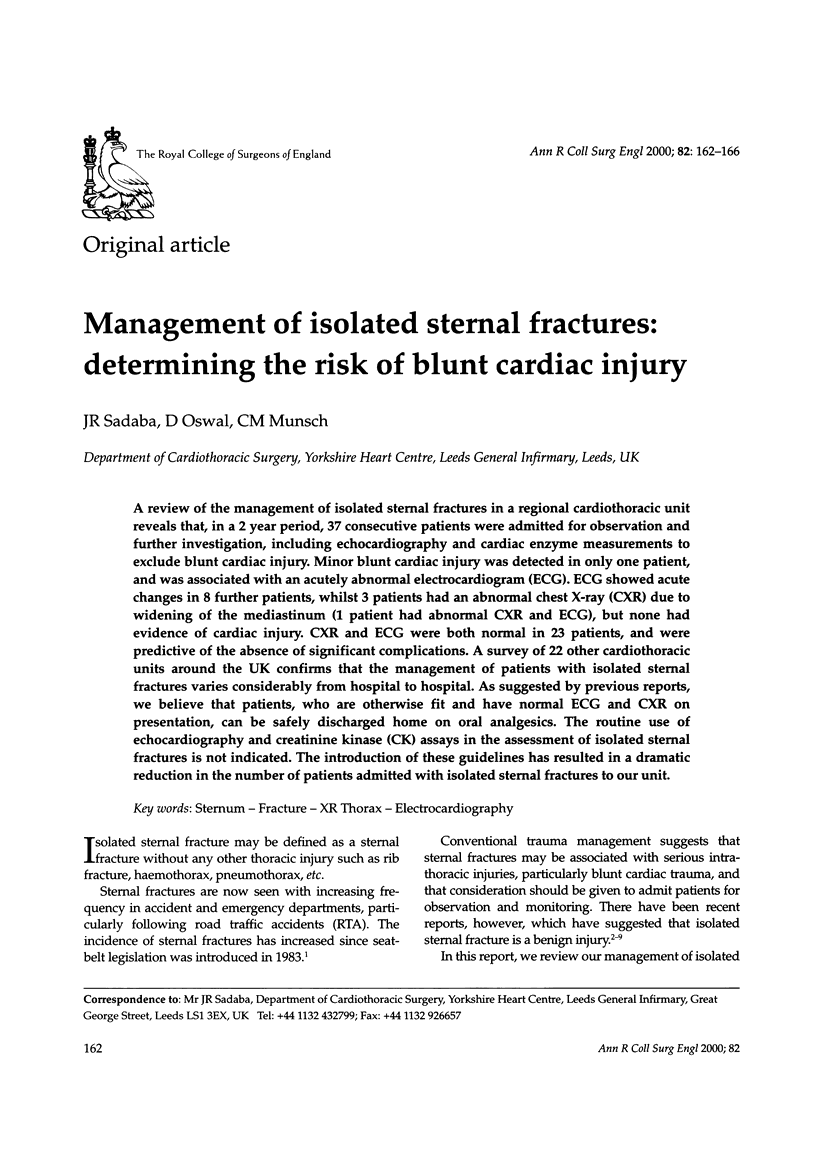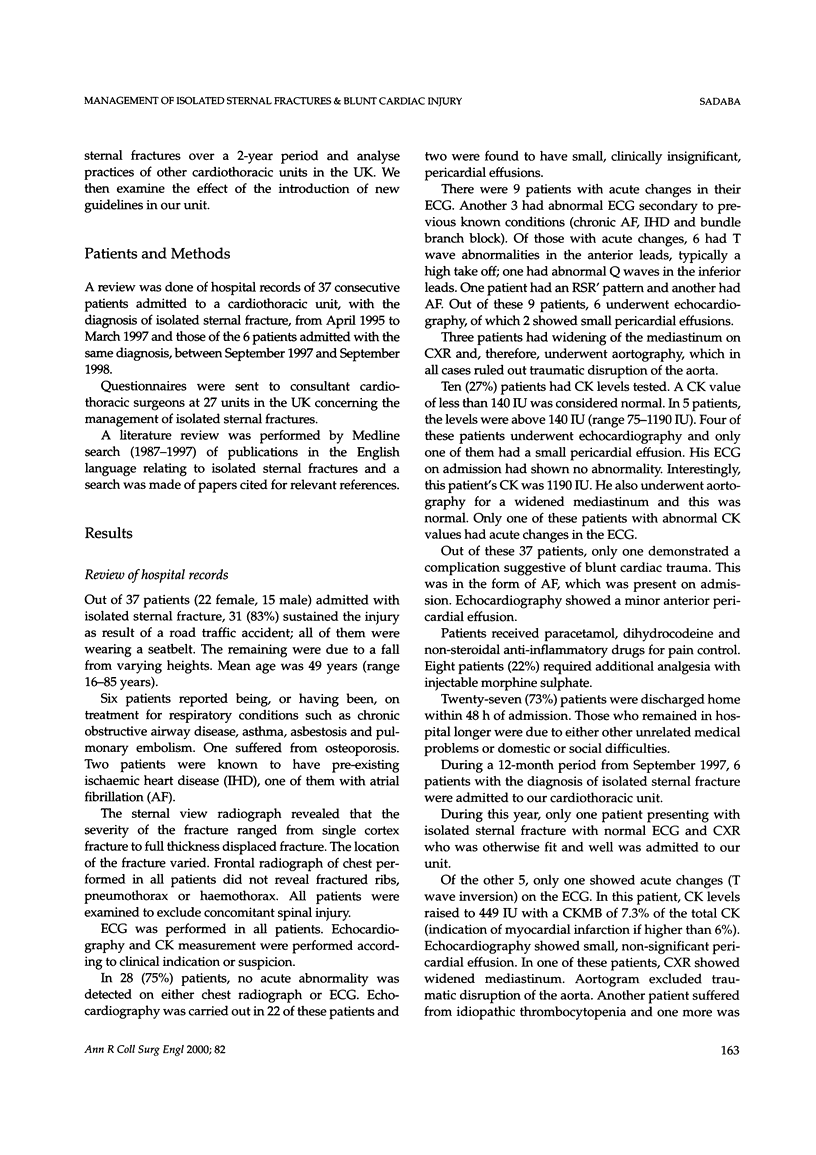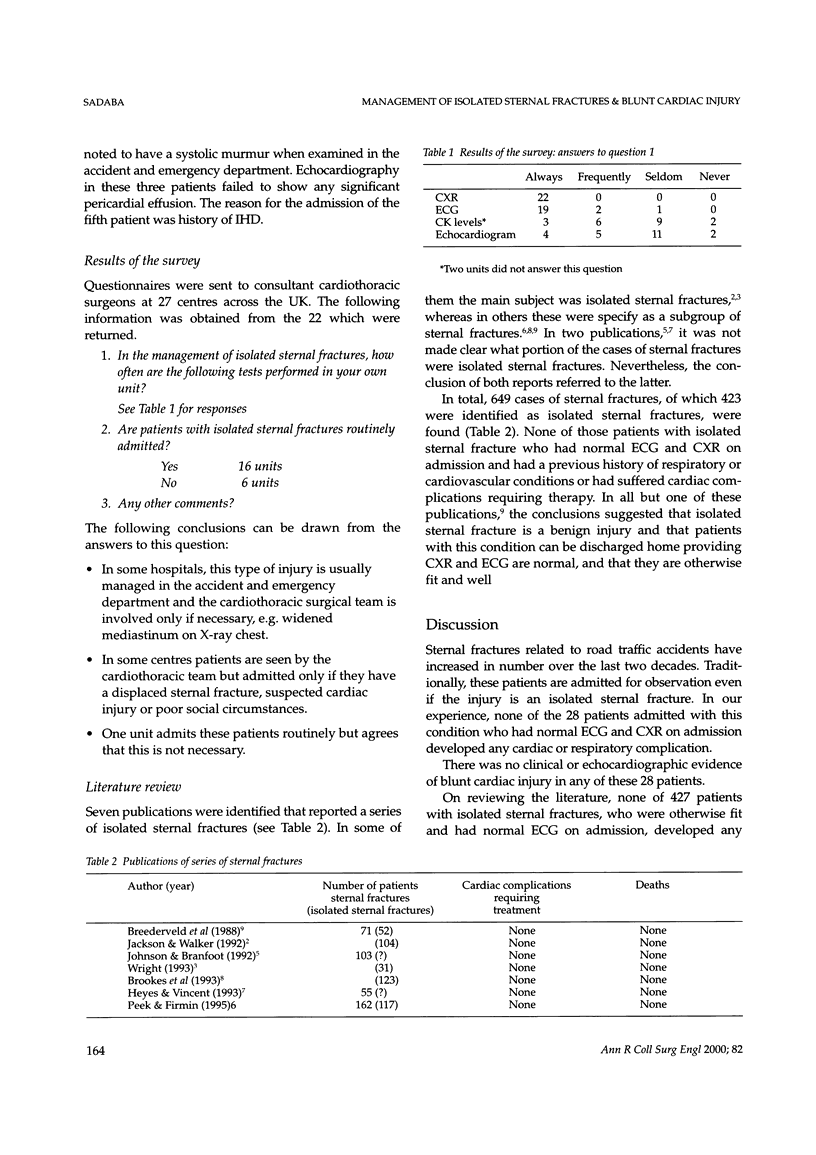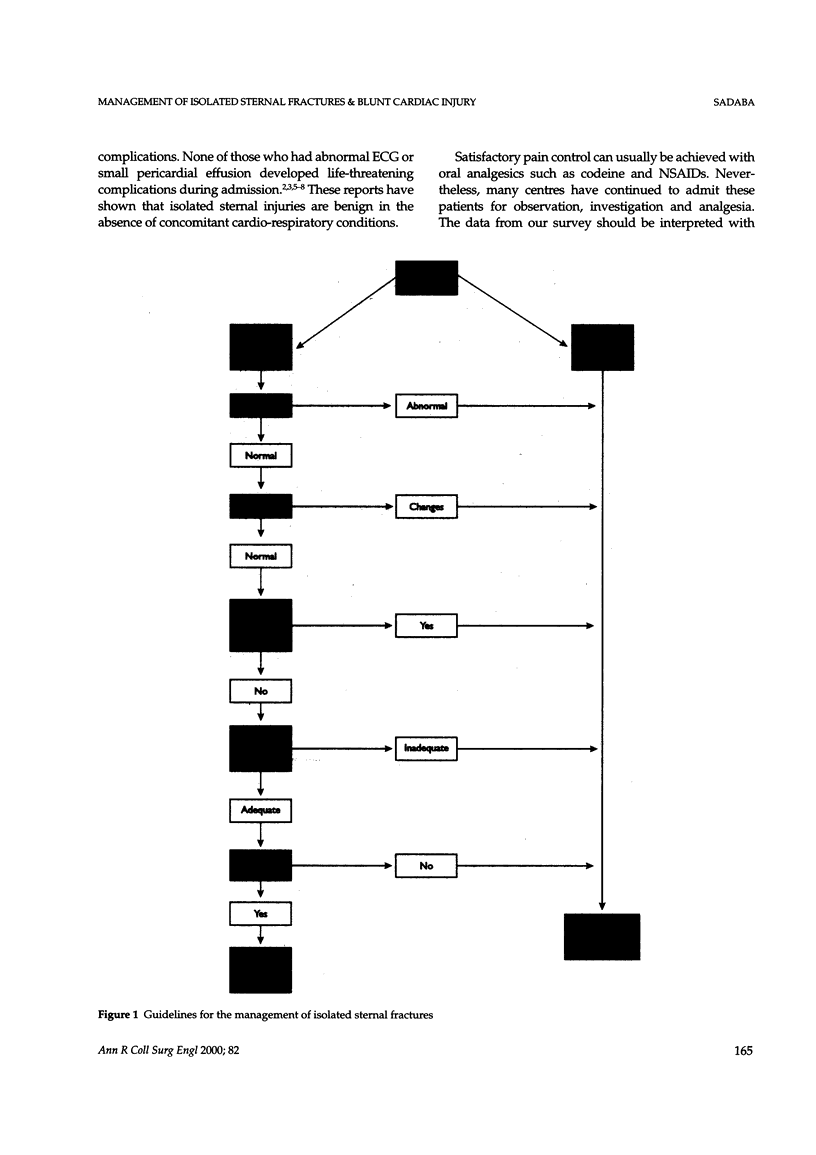Abstract
A review of the management of isolated sternal fractures in a regional cardiothoracic unit reveals that, in a 2 year period, 37 consecutive patients were admitted for observation and further investigation, including echocardiography and cardiac enzyme measurements to exclude blunt cardiac injury. Minor blunt cardiac injury was detected in only one patient, and was associated with an acutely abnormal electrocardiogram (ECG). ECG showed acute changes in 8 further patients, whilst 3 patients had an abnormal chest X-ray (CXR) due to widening of the mediastinum (1 patient had abnormal CXR and ECG), but none had evidence of cardiac injury. CXR and ECG were both normal in 23 patients, and were predictive of the absence of significant complications. A survey of 22 other cardiothoracic units around the UK confirms that the management of patients with isolated sternal fractures varies considerably from hospital to hospital. As suggested by previous reports, we believe that patients, who are otherwise fit and have normal ECG and CXR on presentation, can be safely discharged home on oral analgesics. The routine use of echocardiography and creatinine kinase (CK) assays in the assessment of isolated sternal fractures is not indicated. The introduction of these guidelines has resulted in a dramatic reduction in the number of patients admitted with isolated sternal fractures to our unit.
Full text
PDF




Selected References
These references are in PubMed. This may not be the complete list of references from this article.
- Breederveld R. S., Patka P., van Mourik J. C. Fractures of the sternum. Neth J Surg. 1988 Oct;40(5):133–135. [PubMed] [Google Scholar]
- Brookes J. G., Dunn R. J., Rogers I. R. Sternal fractures: a retrospective analysis of 272 cases. J Trauma. 1993 Jul;35(1):46–54. doi: 10.1097/00005373-199307000-00008. [DOI] [PubMed] [Google Scholar]
- Bu'Lock F. A., Prothero A., Shaw C., Parry A., Dodds C. A., Keenan J., Forfar J. C. Cardiac involvement in seatbelt-related and direct sternal trauma: a prospective study and management implications. Eur Heart J. 1994 Dec;15(12):1621–1627. doi: 10.1093/oxfordjournals.eurheartj.a060444. [DOI] [PubMed] [Google Scholar]
- Budd J. S. Effect of seat belt legislation on the incidence of sternal fractures seen in the accident department. Br Med J (Clin Res Ed) 1985 Sep 21;291(6498):785–785. doi: 10.1136/bmj.291.6498.785. [DOI] [PMC free article] [PubMed] [Google Scholar]
- Heyes F. L., Vincent R. Sternal fracture: what investigations are indicated? Injury. 1993 Feb;24(2):113–115. doi: 10.1016/0020-1383(93)90201-g. [DOI] [PubMed] [Google Scholar]
- Jackson M., Walker W. S. Isolated sternal fracture: a benign injury? Injury. 1992;23(8):535–536. doi: 10.1016/0020-1383(92)90154-k. [DOI] [PubMed] [Google Scholar]
- Johnson I., Branfoot T. Sternal fracture--a modern review. Arch Emerg Med. 1993 Mar;10(1):24–28. doi: 10.1136/emj.10.1.24. [DOI] [PMC free article] [PubMed] [Google Scholar]
- Peek G. J., Firmin R. K. Isolated sternal fracture: an audit of 10 years' experience. Injury. 1995 Jul;26(6):385–388. doi: 10.1016/0020-1383(95)00051-a. [DOI] [PubMed] [Google Scholar]
- Wright S. W. Myth of the dangerous sternal fracture. Ann Emerg Med. 1993 Oct;22(10):1589–1592. doi: 10.1016/s0196-0644(05)81265-x. [DOI] [PubMed] [Google Scholar]


